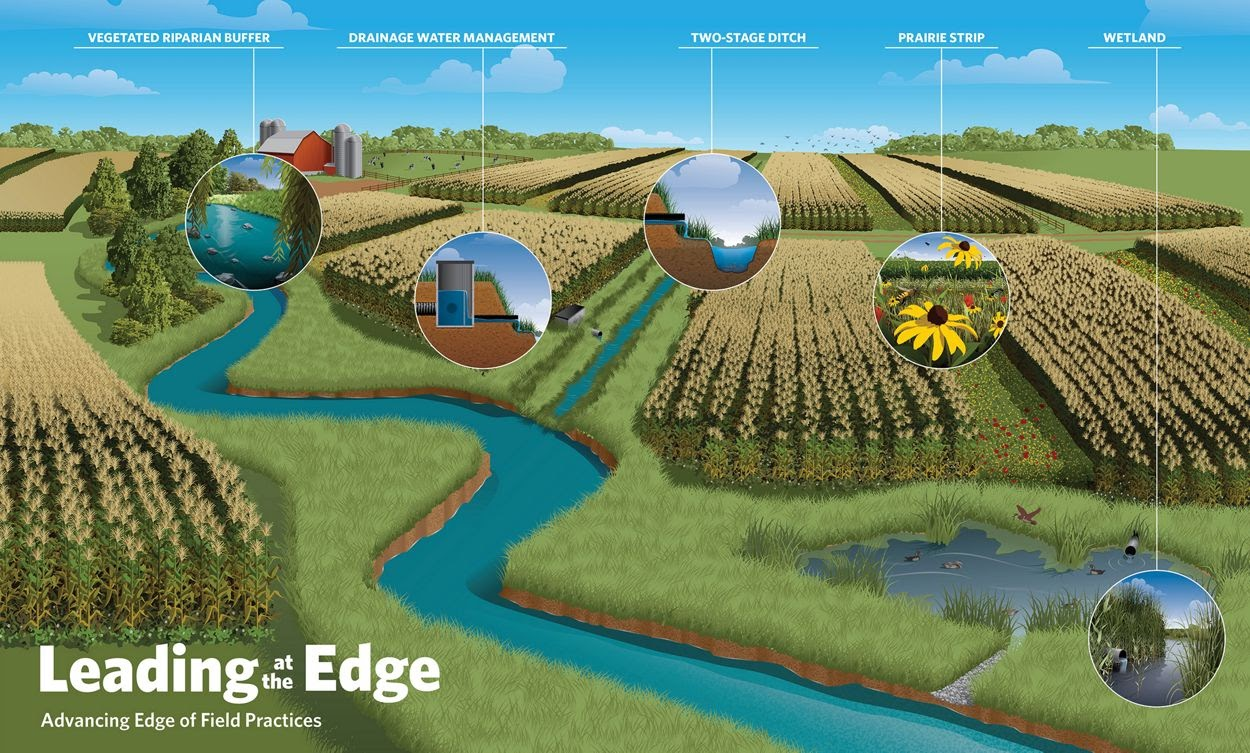Edge of Field Buffers
Edge of Field (EOF) Buffers

What are Edge of Field Buffers?
Edge-of-field buffers focuses on identifying and reducing agricultural sources of excess nutrients which can threaten the health of streams, rivers, and lakes. Edge-of-field buffers assesses the quantity and quality of agricultural runoff and evaluates the effectiveness of conservation practices that aim to reduce nutrient loss.
Why Plant Buffers and Borders?
Buffers/Field Borders and WildlifeThey can improve income on cropland or pasture, reduce risks from damaging insects, reduce pollutants in runoff water and restore beneficial farmland wildlife and pollinators.

Photo Credit: LEADING AT THE EDGE : A Roadmap to Advance Edge of Field Practices in Agriculture
Informational pdfs/links
Integrated Management of In-Field, Edge-of-Field, and After-Field BuffersEdge of Field Structures and Practices
Leading at the Edge: A Roadmap to Advance Edge of Field Practices in Agriculture